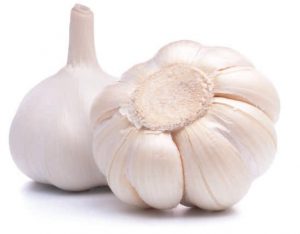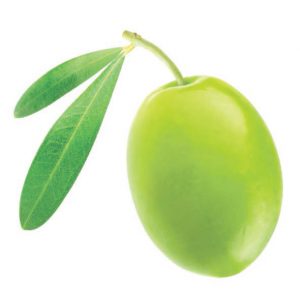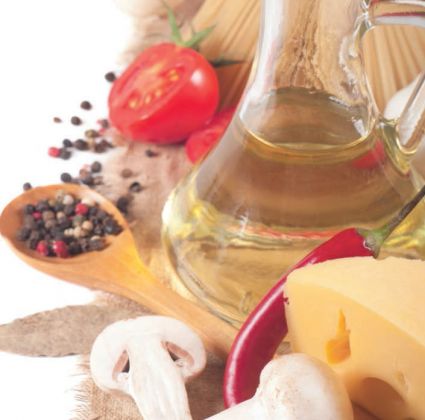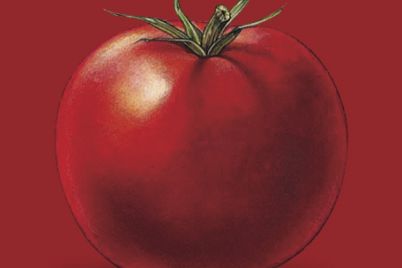I learnt to cook so well in Sicily that I will cause the banqueters to bite the dishes and the plates for joy.”
– attributed to Alexis of Tarentum, 4th century BC,
in Mary Taylor Simeti, Pomp and Sustenance: Twenty-five Centuries of Sicilian Food (1989).
“Simplicity…is one of the most fundamental and at the same time most elusive keys to preparing food well… Certainly, it is the absolute cornerstone of the spectacular and glorious regional Italian fare that has so influenced my approach to cooking… Perfectly pristine ingredients, combined sensibly and cooked properly, are what make Italian food taste so good…
– Mario Batali, Simple Italian Food (1998)
We ate Italian food last night. We were in Stratford, Ontario, to see a play and after the show we had dinner at Pazzo Italian Taverna, not by design, but just because it had the best-sounding menu of all the pubs and restaurants on the main drag. And we were not disappointed. We sat at the bar and watched the action in the room. Amidst the constant bustle of activity, succulent dishes were whisked by: risotto and gnocchi, roast pork with figs and artichokes. Fresh, pungent garlic and basil tickled our senses as we waited: delightful torture. We shared some fresh oysters on the half shell to start. Then a creamy sorrel and green garlic soup, and a crisp arugula salad, both of which were excellent. Next, ravioli stuffed with fresh green peas and cheese with truffled lemon butter, and the catch of the day, whitefish, wrapped in a deliciously spicy crust and drizzled with a savoury sauce.
I enjoy all kinds of food, but Italian food is still the default for me. It’s my point of departure. It’s the yardstick by which all other cuisines and dishes are measured, for flavour, for freshness, and for the comfort factor. And apparently I am not alone in thinking this way. According to Italian-American chef and writer Biba Caggiano, surveys indicate that Italian food is now not only the most popular food in America, it is also the most preferred food around the world. The two epigraphs above do much to explain why. First, Italians have always taken their food pretty seriously. Second, we have learned the basic lessons exceedingly well: the best food comes from preparing fresh, local ingredients, with care, in the traditional ways. It’s that simple.
 Although these two passages by enthusiastic Italian chefs may be separated by about 2500 years, they are bound together in the sensibility they express about food. The pleasures associated with sumptuous food and elegant dining – the joy of preparing and serving these dishes, and the delights of savouring them – have been appreciated by Italians for millennia. Food speaks volumes about a people’s values and culture, and perhaps none know this better than Italians. But the ties between food, culture and ethnicity are by no means exclusive to Italians. For example, Iranian chef and food writer Najmieh Batmanglij suggests: “The cuisine of any country is a fundamental part of its heritage. The ingredients reflect its geography, while the savour and colours accent the aesthetic tastes of its inhabitants. And food is associated with so many major social events – births, weddings, funerals – that culinary traditions are intertwined with a country’s history and region. This is especially true of Iran.” Batmanglij’s comments underscore the importance of food and culinary traditions as a window into defining features of ethnic groups.
Although these two passages by enthusiastic Italian chefs may be separated by about 2500 years, they are bound together in the sensibility they express about food. The pleasures associated with sumptuous food and elegant dining – the joy of preparing and serving these dishes, and the delights of savouring them – have been appreciated by Italians for millennia. Food speaks volumes about a people’s values and culture, and perhaps none know this better than Italians. But the ties between food, culture and ethnicity are by no means exclusive to Italians. For example, Iranian chef and food writer Najmieh Batmanglij suggests: “The cuisine of any country is a fundamental part of its heritage. The ingredients reflect its geography, while the savour and colours accent the aesthetic tastes of its inhabitants. And food is associated with so many major social events – births, weddings, funerals – that culinary traditions are intertwined with a country’s history and region. This is especially true of Iran.” Batmanglij’s comments underscore the importance of food and culinary traditions as a window into defining features of ethnic groups.
So, if you want to understand a people, consider their culinary history and traditions – because food has a primal quality. Nothing else – not dress, not language, not even history – conveys as deeply or as completely the very essence of a culture. Food captures and expresses something vital and resilient about a group of people. Food is also complex; it encompasses both the simple, mundane routines of daily sustenance, and the sophisticated vividness of feasts and banquets. The mundane: nothing conjures up associations with home as much as food. Who has not had the delightful experience of opening the front door and being greeted by the familiar aroma of dishes that could only have been prepared by a cherished family member? The grandiose: in so far as we cook not only for our own pleasure, but also to impress others, food also takes on, in the home and outside of it, in restaurants, cafés and public spaces, the glamour of potlatch and spectacle, ritual and performance.
 Italian culinary traditions were the theme of a panel presented at the Association of Italian Canadian Writers (AICW) conference, part of the Blue Metropolis Literary Festival in Montreal, in May of 2014. But this panel focused on “The Dark Side of La Cena,” the curious twist having been proposed by Toronto writer Darlene Madott. She explained that the idea came to her as a reaction to the recent anthology of food writing entitled Italian Canadians at Table: A Narrative Feast in Five Courses (2013), in which writers from across Canada shared their memories, stories and recipes in a rich celebration of their shared Italian heritage and its culinary expression. Madott (whose work is included in the anthology) noted that most of the entries in the collection focus on the happy memories and positive associations we have with food. Those mostly positive images and reminiscences provide wonderful insights into the struggles of Italian immigrants to preserve valued parts of their ethnic identity. But what can we learn about Italian-Canadian identity by examining the (relatively neglected) dark images and unhappy memories in writings about food?
Italian culinary traditions were the theme of a panel presented at the Association of Italian Canadian Writers (AICW) conference, part of the Blue Metropolis Literary Festival in Montreal, in May of 2014. But this panel focused on “The Dark Side of La Cena,” the curious twist having been proposed by Toronto writer Darlene Madott. She explained that the idea came to her as a reaction to the recent anthology of food writing entitled Italian Canadians at Table: A Narrative Feast in Five Courses (2013), in which writers from across Canada shared their memories, stories and recipes in a rich celebration of their shared Italian heritage and its culinary expression. Madott (whose work is included in the anthology) noted that most of the entries in the collection focus on the happy memories and positive associations we have with food. Those mostly positive images and reminiscences provide wonderful insights into the struggles of Italian immigrants to preserve valued parts of their ethnic identity. But what can we learn about Italian-Canadian identity by examining the (relatively neglected) dark images and unhappy memories in writings about food?
The dark underbelly of the Italian-Canadian relationship to food can tell us a great deal not only about Italian ethnicity, but also about stereotypes, stigmas and prejudice in Canadian society. It should come as no surprise that the darkest shadows that fall across this relationship are cast by the very aspects of food culture that are most celebrated. Take the matter of identity, for instance. No doubt pasta, salami, and polenta were a source of comfort and pride; no doubt that steaming bowl of endive greens seasoned with garlic and olive oil, or that plate of crispy fried calamari, called up poignant associations of “home,” the old ways, and the old country. But paradoxically, these same things marked Italian newcomers as different, as outsiders, who were not part of the mainstream of Canadian society. The worker who unpacked that big hunk of crusty bread stuffed with hot sausage, roasted peppers and garlic, and dripping with olive oil, was bound to turn some heads at lunchtime. The pungent smell of Italian spices like oregano and basil was foreign to most Anglo-Canadians. There are many examples in Italian-Canadian literature where Italian foods become a source of shame for young immigrants or their children as they tried to integrate into Canadian society. The autobiographical writing of Penny Petrone and the fiction of Frank Paci and Nino Ricci, among others, capture the conflicted relationship between Italian immigrants and Italian food, reflecting the ambivalence that is typical of the immigrant experience.
The evolution of pizza, pasta and prosciutto is chronicled in testimonials, photographs, and other materials archived at the Canadian Museum of Immigration at Pier 21 in Halifax. A researcher at that museum trawled through their collection and published an article that details the history of food being confiscated from new arrivals. Jan Raska notes: “If one thing caused scenes at Pier 21, it was sausages… Newcomers,” he adds, “often went to enormous efforts to conceal their food products from Canadian customs officials for fear of losing their beloved sausages, nuts, bread and other cherished food items… Many feared that what Canadians purchased as food remained of lesser quality than their old country’s foodstuffs.” And, of course, they were right.
 Most of the food items that the immigrants were accustomed to and loved were unavailable to them in Canada, and would not be for a long time. One report from the museum archives describes an Italian boy who, when handed a loaf of sliced bread as he boarded a train heading west in 1958, began to gesture as if he were playing the accordion; apparently, the strange texture and appearance of the bread caused him to think of it as a musical instrument. It would take several generations before the Canadian food industry would recognize the market for specialty imported foods and develop the infrastructure needed to support the import and sale of those items.
Most of the food items that the immigrants were accustomed to and loved were unavailable to them in Canada, and would not be for a long time. One report from the museum archives describes an Italian boy who, when handed a loaf of sliced bread as he boarded a train heading west in 1958, began to gesture as if he were playing the accordion; apparently, the strange texture and appearance of the bread caused him to think of it as a musical instrument. It would take several generations before the Canadian food industry would recognize the market for specialty imported foods and develop the infrastructure needed to support the import and sale of those items.
Today, Italian food is commonplace, widely available, even de rigueur. Is there a town anywhere in Canada that doesn’t have a pizzeria? Biscotti are available at every corner Starbucks. Pasta is a staple in many homes with no Italian heritage. And, according to a tour guide at Pier 21, Canada is now home to one of the world’s most diverse collections of tomato varieties, the seeds smuggled in by crafty Italian immigrants in their undergarments, and reflecting the diverse regions of Italy from which those immigrants hailed.
Biba Caggiano points out that the very notion of “Italian food” would seem strange to Italians because it collapses important regional distinctions that are such a vital part of authentic Italian culinary traditions. Italians would describe particular dishes as “alla Milanese… alla Bolognese… alla Siciliana” and so on. In fact, a dish can be prepared quite differently in villages that are mere kilometres apart, and each community will insist that its methods are the correct ones.
But here we arrive at another paradox: while we might welcome the more widespread availability and acceptance of Italian food in Canada today, this development too entails losses. Now that the varied and specific Italian culinary traditions have migrated, we risk losing the crucial regional distinctiveness that sets these food traditions apart in the relentless move toward popularity and globalization. As a case in point: I was able to order (and indeed enjoyed) an “Indian Pizza” at my local pub recently. (I confess, I don’t know what came over me. It was sacrilege, I suppose, but it was one of those times when I just craved something a little different.) In an inspired flash of food fusion brilliance the chef had seasoned my pizza with a hint of curry powder or masala and other exotic spices from the east. It was surprisingly good. But was it still Italian? Hard to say. Hybridity, we are told, is how newness enters the world; the cracks are what let the light in. But what will this sort of food fusion fashion visit upon us in the long run? Will it undermine the preservation of distinctive and authentic food traditions to the point where they disappear entirely? Or will it refine tastes and the appetite for specificity?
The reflections on food traditions and family rituals in Italian-Canadians at Table distil the essence of cultural memory. Food is the perfect subject for discussions about the processes of preservation and adaptation, but also (to return to the dark side), of disintegration and alienation. On the one hand, food can foster familial bonding and expand the circle of relationships through expressions of hospitality, generosity and openness. When food is passed across fences, new friends are made. In Sheldon Currie’s novel about Italian immigrants, Down the Coaltown Road (2002), set in Cape Breton, the Italian miners and shipyard workers share what they grow with their neighbours, and thus offset the effects of wartime scarcity; the softening effects of friendship and kindness help them overcome petty prejudices and dowse the fires of racism and bigotry that war was fanning.
On the other hand, food, as a trope for culture in the narratives of Italian-Canadians, can expose rejection of traditional values, the breakdown of familial ties, and the bitterness that characterizes defeat and dysfunction.
Exploring the food cultures of ethnic groups provides a way to approach those cultures and understand important elements of their history and geography. The foods they grow and the dishes they prepare capture the terroir of the land and convey something of the values and sentiments of the people themselves. So too, writing honestly about our relationship with our own food cultures, not only to celebrate them, but also to reflect on their disturbing or retrogressive or unpleasant elements, can convey important political or even spiritual truths about who we were, who we are now, and how the world around us is changing. As Batmanglij notes, the “concept of duality [in Persian cuisine] … extends beyond moral issues. We often balance light and dark, sweet and sour, hot and cold…” The lessons of the table reflect the lessons of life.
Back at the table, I count myself lucky. My wife loves to cook, and she is an inspired and adventurous chef. We forage for berries, wild leeks, mushrooms, and we experiment. Lately she’s shown a fondness for bacon, and for things fried in bacon fat. So delicious, and so bad for you. I’m trying to get back to the olive oil. You can have the red velvet cheesecake, I’ll have the cannoli – with both the sweetness of the cream, AND the crunch of the crispy shell. Italian foods are full of pleasure, and mysteries, and contradictions… an endless maze of fascination. No wonder I keep coming back to them as my culinary, maybe even my spiritual home.
Jim Zucchero is an academic counsellor and instructor at King’s College (Western University) in London, Ontario. Culinary overindulgence is one of his favourite vices (but it could be worse). He acknowledges his esteemed colleague Vidya Natarajan for her editorial assistance in completing this article.



